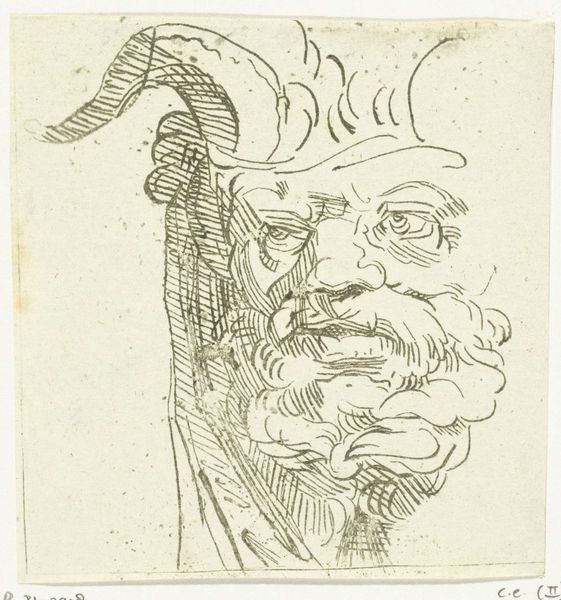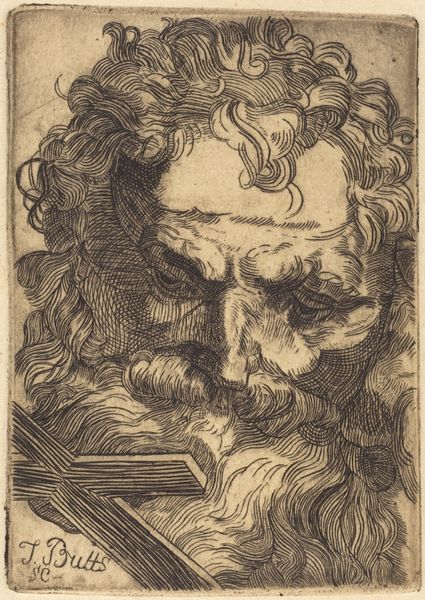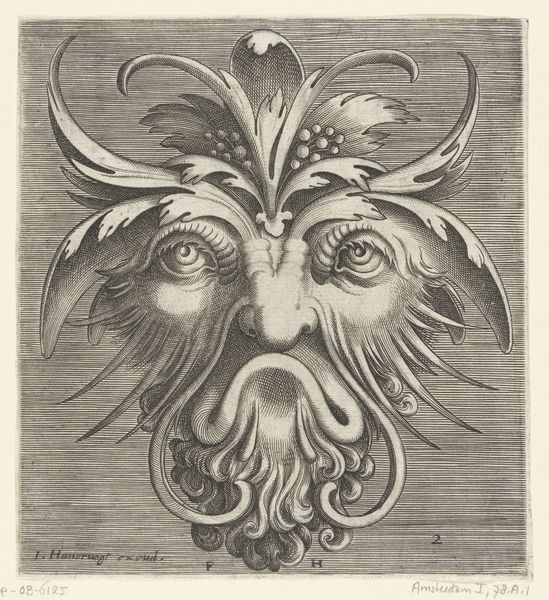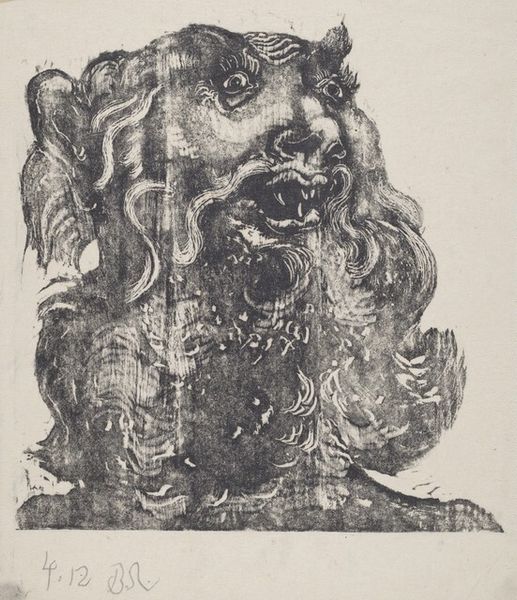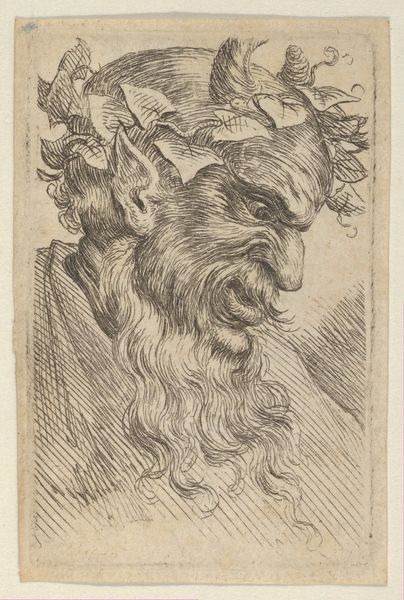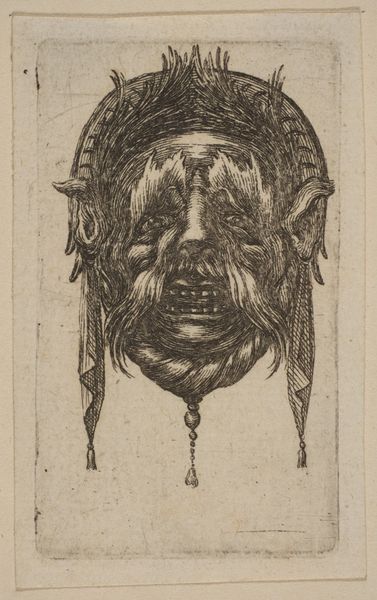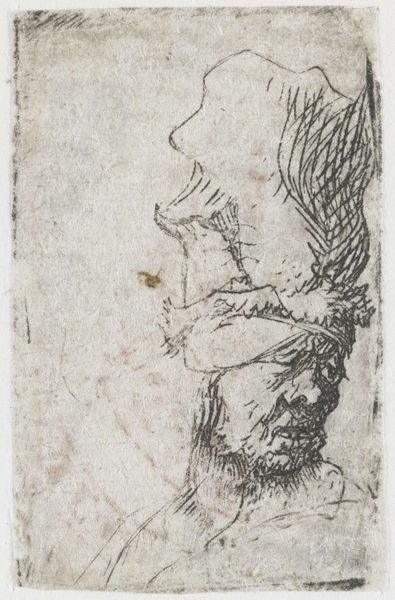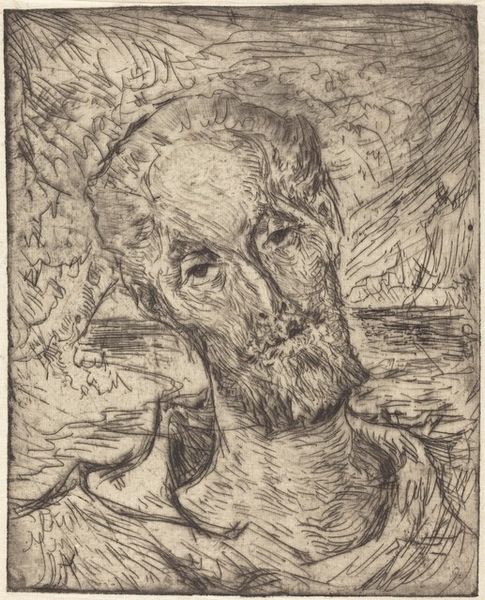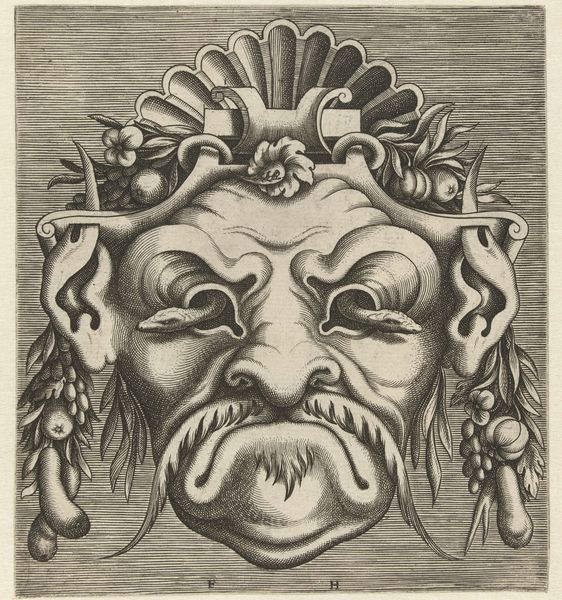
Dimensions: height 115 mm, width 110 mm
Copyright: Rijks Museum: Open Domain
Curator: Let's turn our attention to "Head of a Satyr," a drawing located here at the Rijksmuseum and believed to have been created sometime between 1778 and 1838 by Anthonie van den Bos. Editor: What strikes me immediately is the intensity captured in such a seemingly simple ink drawing. There’s a rawness, an untamed quality about this figure – like a glimpse into something primordial. Curator: Yes, satyrs in art carry such weight! Throughout history they've been potent symbols representing humanity’s dual nature—the civilized and the instinctual, the rational and the wild. This head, with its furrowed brow and unruly beard, evokes centuries of symbolic baggage. Editor: I'm particularly interested in how the artist uses the ink medium to emphasize that duality. The precise lines around the eyes and the textured beard suggest an effort to portray a being both grounded and ethereal. Where does "Anthonie van den Bos" situate this character in society and politics? Curator: Considering the academic leanings and the baroque influence, it's fair to interpret that van den Bos positioned his figure within existing dialogues about moral order and disorder. The satyr served as a convenient symbolic shorthand for discussions about temptation, indulgence, and their consequences within a structured society. Editor: Do you see any possibilities for queering this image, since satyrs have a strong historical affiliation to sexual licentiousness? It almost feels like, as this figure emerges from the page, van den Bos grants his viewers the permission to indulge in radical and queer erotic possibility. Curator: It is worth noting how these renderings and characterizations tend to re-emerge over time to reflect anxieties about control and abandon. I appreciate you flagging possibilities of interpreting this image in a sexually progressive manner; there are definitely some traces here, but ultimately the academic leanings feel stronger to me than the countercultural subtexts you’ve teased out here. Editor: Perhaps our interpretations represent the tensions held within the drawing itself, mirroring the satyr's very essence: caught between binaries, neither wholly beast nor man. Curator: Indeed. Perhaps this "Head of a Satyr" will always prompt this fascinating dialogue, a reminder of the ever-shifting terrain between reason and instinct.
Comments
No comments
Be the first to comment and join the conversation on the ultimate creative platform.
